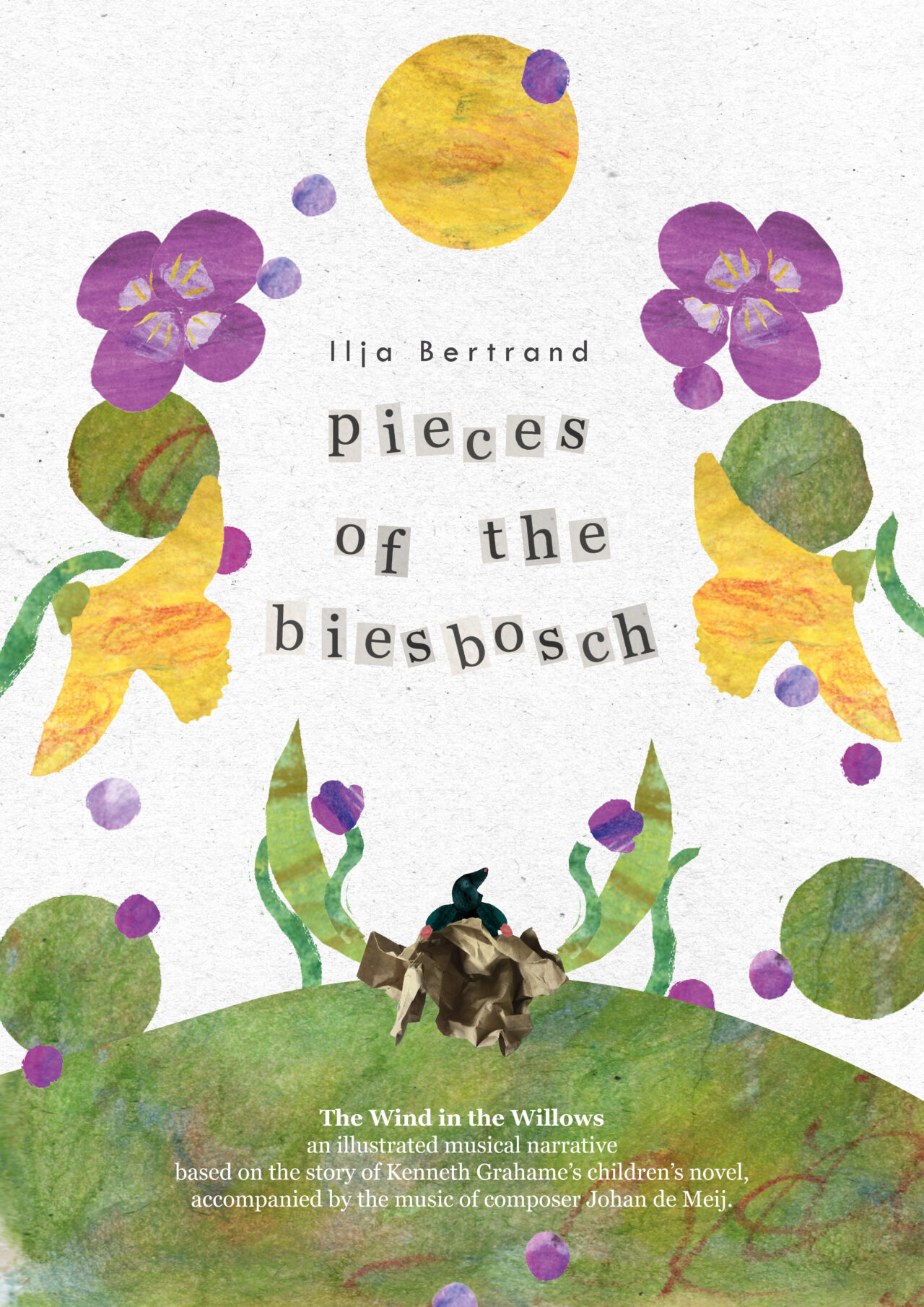Pieces of the Biesbosch
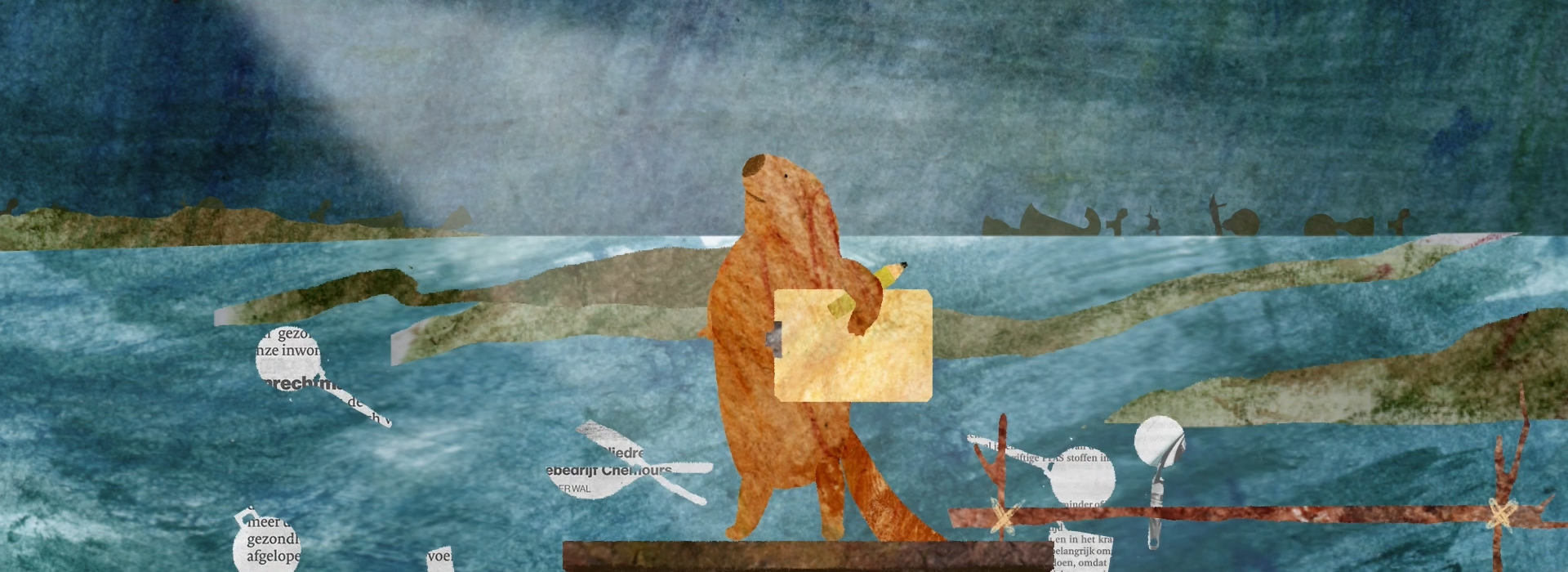
Project details
- Year
- 2024
- Programme
- Bachelor – Illustration
- Practices
- Social Practices
- Minor
- New Earth
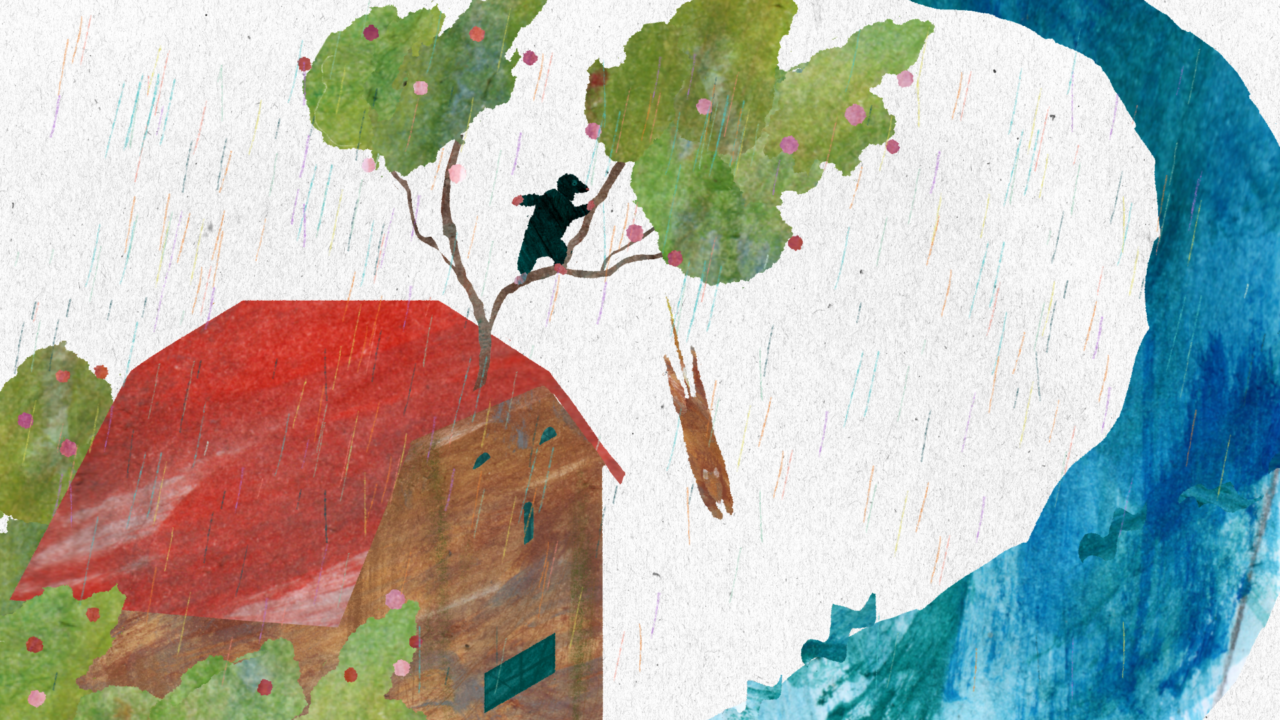
illustrated musical narrative
“Pieces of the Biesbosch” is an illustrated musical narrative based on Kenneth Grahame’s children’s novel “The Wind in the Willows.” The work consists of a series of illustrations and animations accompanying the music of composer Johan de Meij.
The narrative tells the story of Mole, Rat, Beaver, Toad and friends, whose lives revolve around the waters of the Biesbosch. One day, a factory with a toxic discharge is swiftly built on the riverside. The protagonists have to deal with the consequences that this factory brings to their beloved water.
Ilja Bertrand is an illustrator who is passionate about music, animal welfare, children’s books, and animation. She undertook this project to integrate all these interests into one cohesive work.
Pieces of the Biesbosch – animation
Pieces of the Biesbosch – The Wind in the Willows (performance)
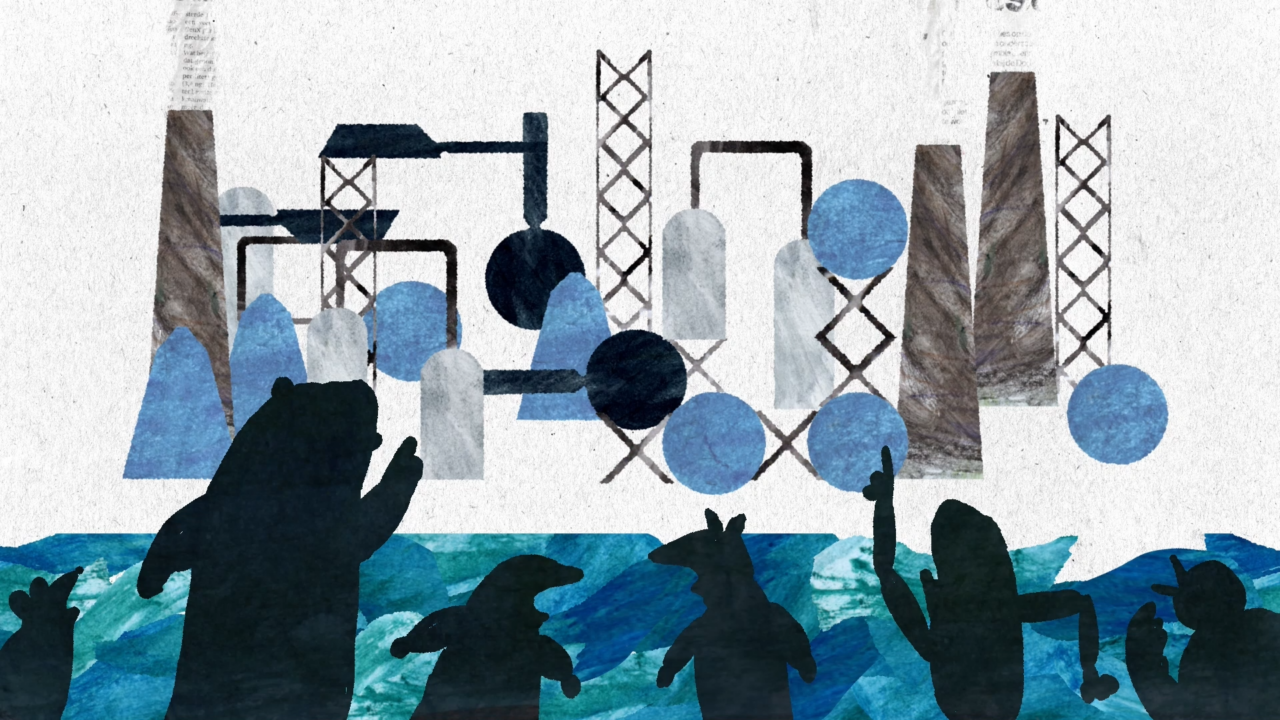
the illustrations & animations
The musical piece ‘The Wind in the Willows’ served as the base for this animation. While illustrating and animating, artist Ilja Bertrand aimed to capture the essence of the music. Next to this, there can be lots of musical instruments and notation found in the illustrations. The most elegant example is the shape of the main theme in the piece, which is hidden throughout the animation. More information on the different layers in the work can be found in this pdf.
Click here for the link to the animation

the music
The purpose of this project is to provide orchestras with the opportunity to create a family-friendly concert. This way, the
animation will evoke empathy for organisms that suffer from the polluted water in the Biesbosch, while simultaneously connecting
children to music.
On June 4th, her own orchestra of N.L.S. Klaaswaal performed the piece “The Wind in the Willows“, by Johan de Meij and Ilja displayed the animations from behind the piano.
Click here for the link to the performance
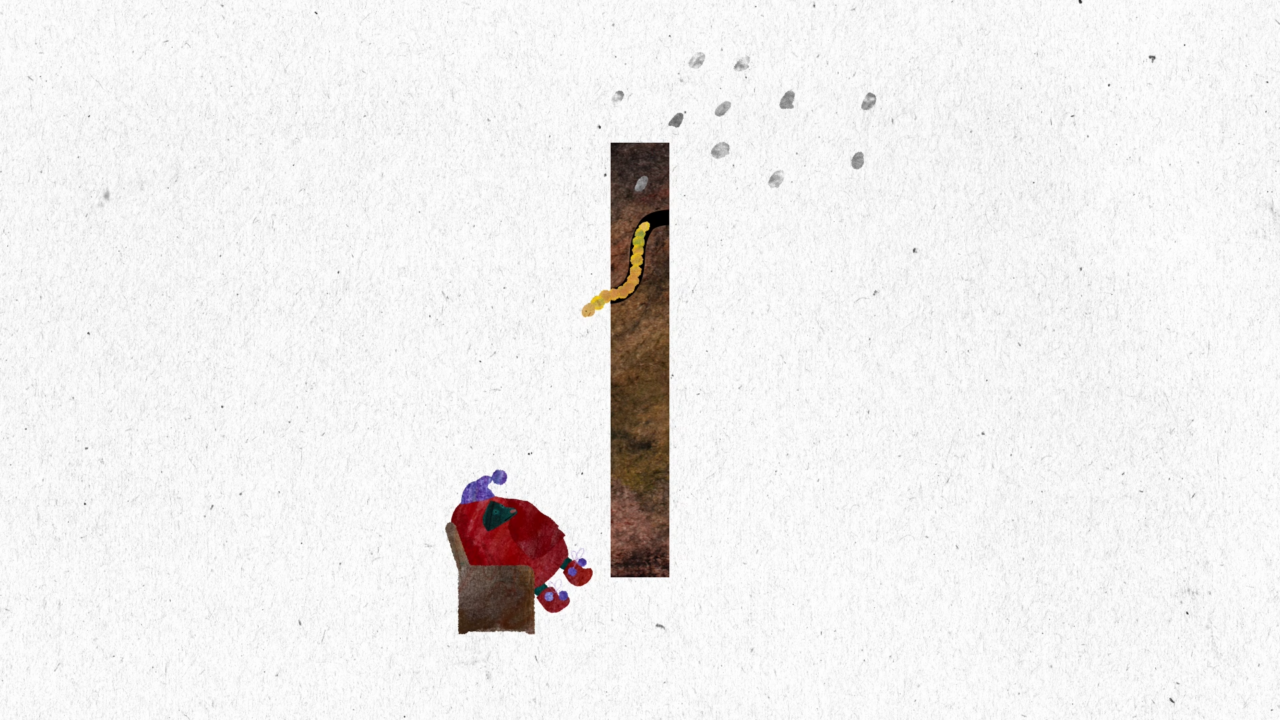
the narrative
We find ourselves in our story in the Biesbosch, where reed beds whisper, waterfowl sing, and all animals live in peace and freedom. Deep underground, where darkness reigns, lives Mole. He is fed up with his lonely existence in his dark hole, completely fed up. He irresistibly longs for the light and warmth of the sun, for the colors and scents of the world above him. And when winter makes way for spring, Mole wakes up one morning in an atmosphere of blissful restlessness and longing. The earth around him is teeming with new life. The moment has arrived, he must go to the sunlight. He scrabbles and scratches and scrapes and scrapes and scratches and scrabbles again, up, up… until, with a final effort, he arrives above ground with his snout and tumbles into the warm grass of a large meadow. There his adventure begins.
He wanders across meadows, along hedges, through thickets, Everywhere there is a bustle of nesting birds and budding flowers. By the river, Mole sees someone busy with his boat. It is Rat. They become friends and Rat asks if he would like to go for a boat ride. Mole gets into the boat,
and lets himself be intoxicated by the rippling and rustling sounds of the river. The glitter and sparkle of the water, the scents… He keeps pinching his cheek to make sure he is not dreaming. On the shore stands the boastful Toad, as always completely full of himself. They meet the wise and thoughtful Ms. Beaver, the friendly Mr. Badger, and Ratty’s noisy water friends. The animals are so busy getting to know each other, that they do not notice that something is happening at the old mill house, a little further away. Who are those two ominous shadows lurking around there? As the sun sets, Rat and Mole sail to the willow where Ratty lives. His new friend prepares dinner, and Mole sits on the porch, leans back blissfully, and exlaims: “Oh, oh, oh, what a wonderful life I have today.”
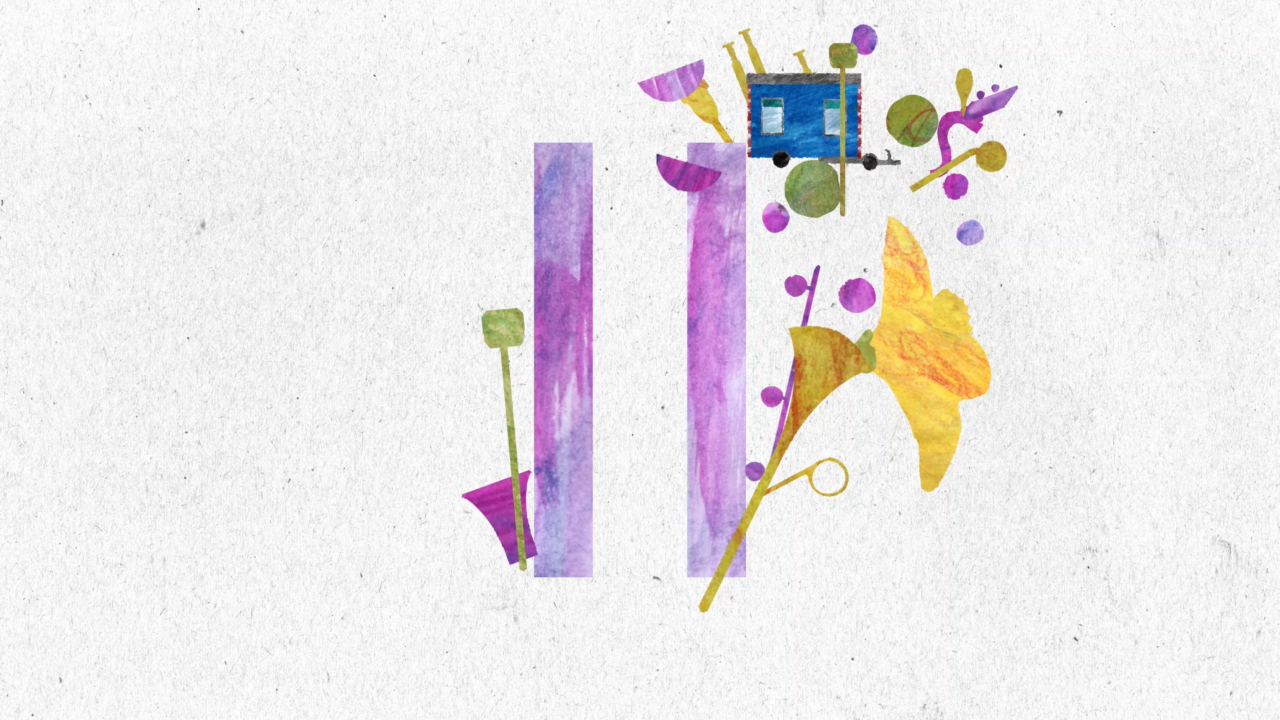
It is fascinating how animals, much sooner than humans, have a keen instinct for impending danger. But in our story, it seems that the animals are too busy with each other to pick up signals of approaching doom. We can already see how shady figures have been busy with preparations all night long. … For what? What is going to happen? It does not bode well. Meanwhile, Mole and Rat are unaware of any danger.
They are looking forward to yet another day full of adventures. Rat suggests heading towards the river. They slide down from the willow and meet their friends. Mole, who until now could only dig tunnels, learns all sorts of new things. He learns to swim, dive, make cannonballs, he learns to row, to climb trees, but he also learns that the river is not always that gently rippling, reassuring water. Because when a storm arises at the end of the morning, everything changes. The friendly water becomes wild and fierce. Rat, always looking for adventure, fearlessly jumps into the high-splashing water. Mole follows him, and finally, they both dive together from the roof of the old mill house into the river. In the evening, Rat and Mole are back on the porch of the willow. “And… Mole,” asks Rat, “was today another wonderful life?” “No,” says Mole, “no Rat,” he curls his toes with glee, “today was not a wonderful life but a particularly, particularly wonderful life.”

Something is wrong. Mole and Rat feel it as soon as they wake up. An inexplicable threat hangs in the air. The river flows faster, as if the water is fleeing. The flowers keep their petals closed, the sun hides behind dark clouds, the birds are silent.
Nature holds its breath.
Something is wrong…
It seems as if something is happening at the old mill house. We already know. We saw it happen. But when Mole and Rat go to look, they are horrified to find that their beloved mill house has disappeared. In its place, a colossal structure of steel and concrete now towers above them, spewing dark clouds of smoke that suffocate the air and spread an unbearable stench. They creep closer and see, through the ventilation grille, a large room filled with pans of all sizes. Everywhere they hear hissing sounds, caused by snakes that coil around the pans like sinister tentacles. They spray them with a strange colorless substance that takes their breath away. They flee, away from the horrifying scene. But an even more shocking event awaits them. When they reach the river, they recoil. The river, their eternally rippling, babbling river, has turned into a terrifying monster, filled with waste. A monster that threatens to destroy all life with its deadly maw. Alerted by Ms. Beaver, all the animals now stand by the riverbank. They are angry and sad. They want to leave this place. The Biesbosch is large enough. But Mole thinks they should fight for their environment. They must combat the steel, the stench, the hissing snakes. Mole and Rat return to the willow. They do not sleep that night.
Mole thinks.
Oh, Mole,think, come up with something. You are smart enough.You will surely find a solution. The river is counting on you.
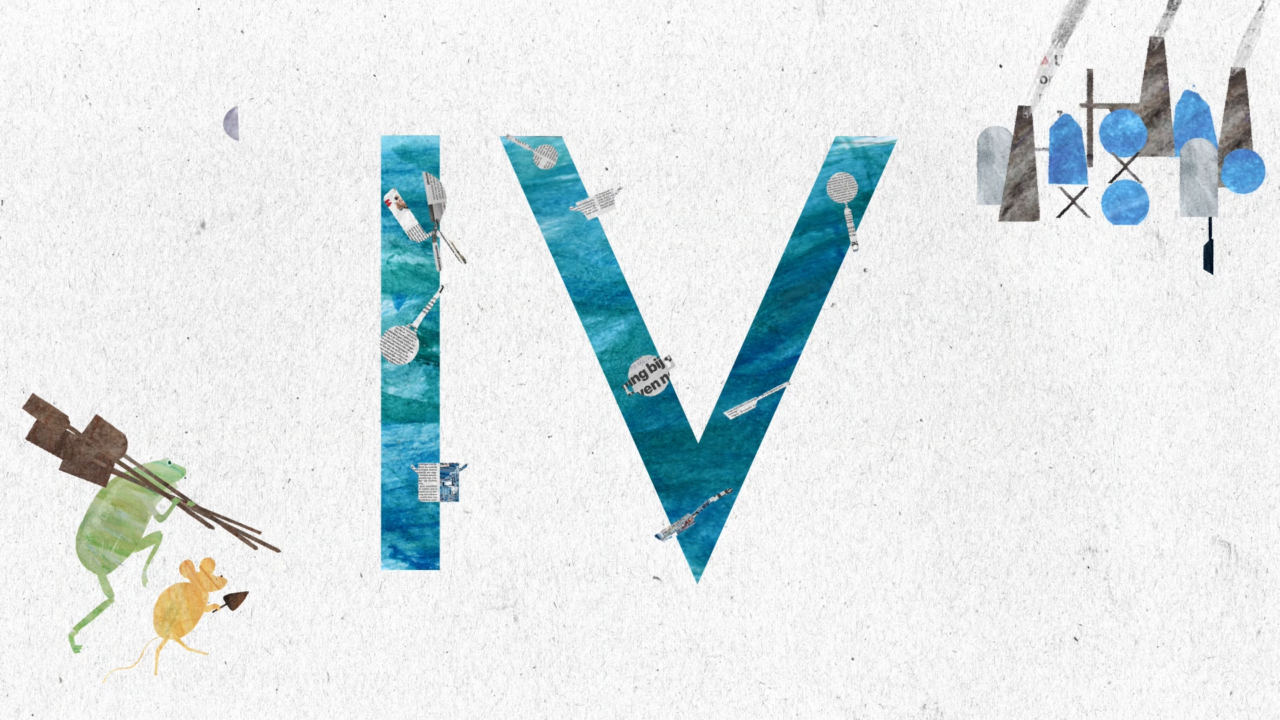
And of course, Mole finds the solution. Of course, it is so obvious. How had he not thought of it earlier? He has been doing it his whole life. He consults with Ms. Beaver. She can calculate exactly where they need to start. Rat calls on all the animals to come immediately to the site of the old mill house. They need to bring whatever tools they have, it doesn’t matter what. They can use everything. Hurry up! Now is the time. It is still dark. And by the light of the moon, driven by an all-encompassing effort, they manage to…
Oh no, wait,
I won’t tell.
Just watch and listen for yourself.
I’m also not going to tell you how they manage to clean the river again. What kind of ingenious machine they build for that. I’m not telling anything more. But at the end of the story, one thing is certain. Nature has won the fight.
